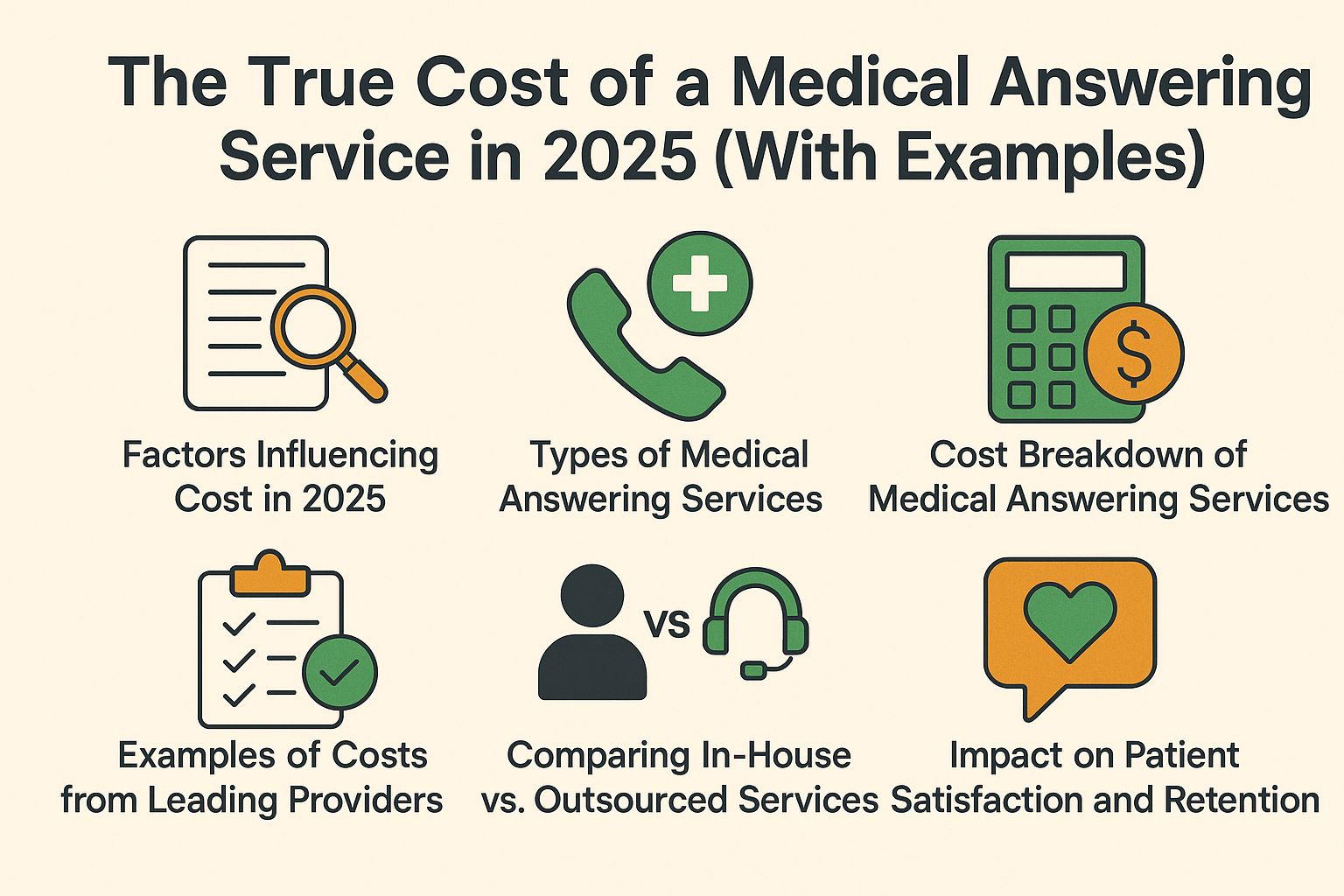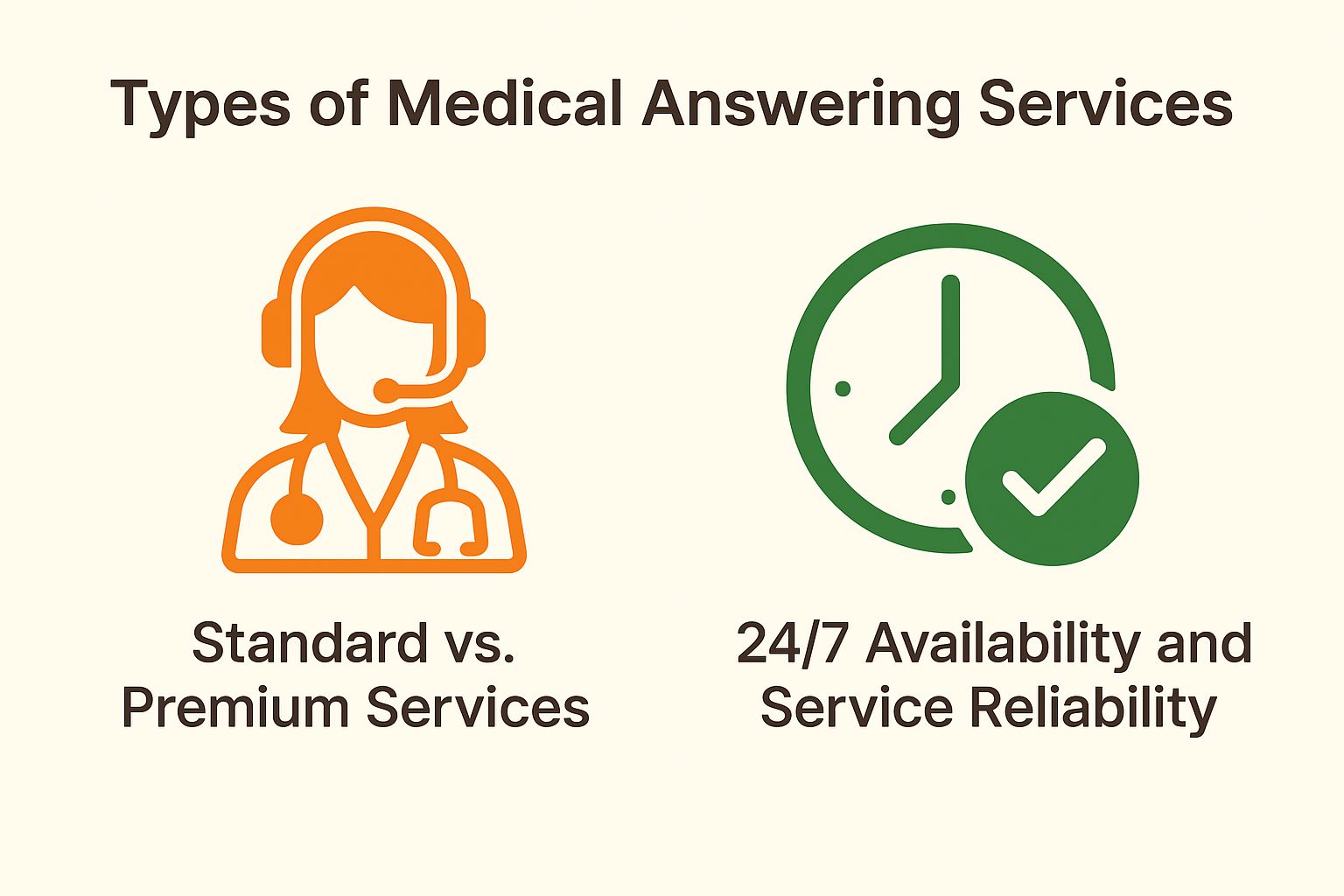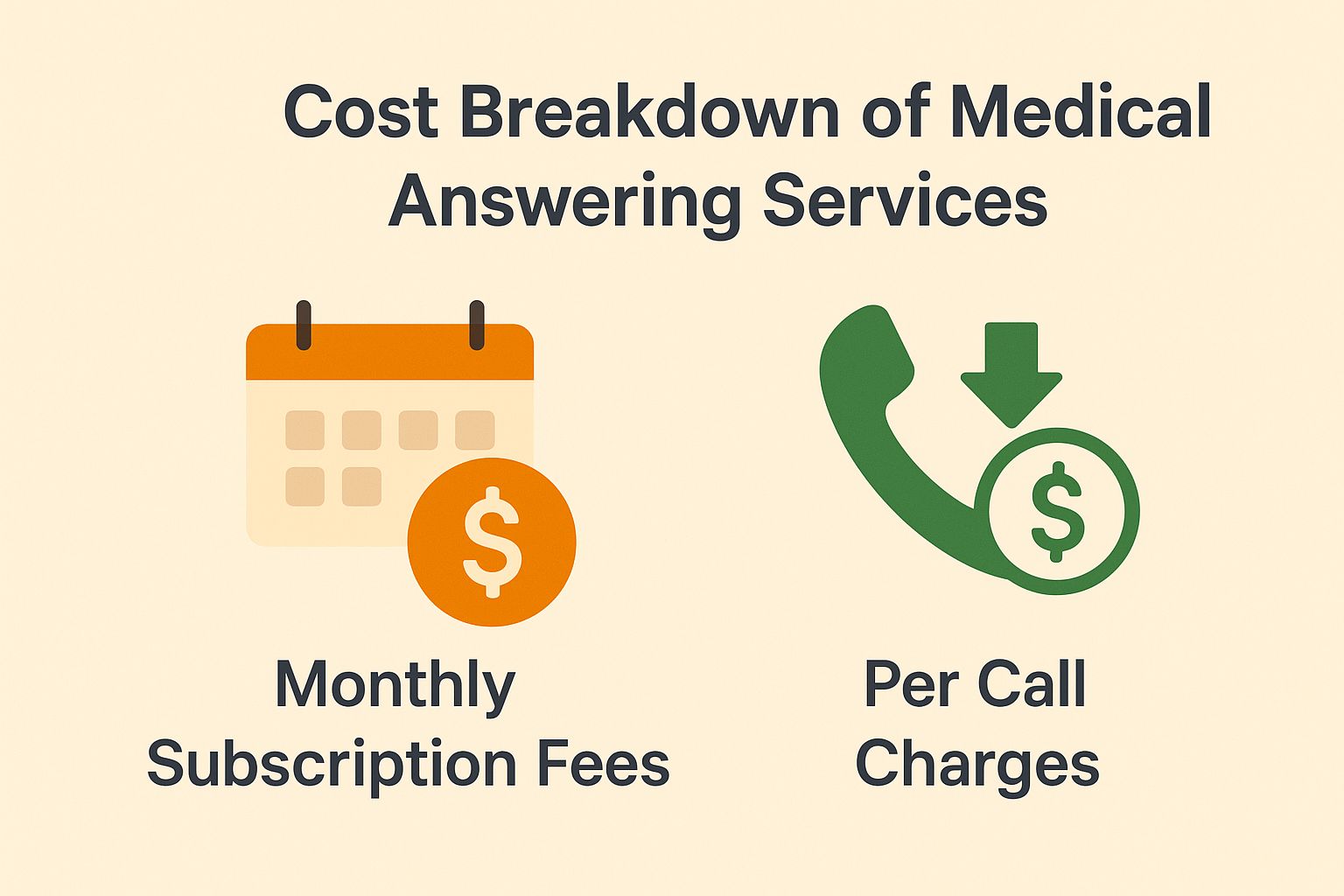
The True Cost of a Medical Answering Service in 2025 (With Examples)
As healthcare changes, the field of medical answering services also shifts, particularly with increasing expenses in 2025. Knowing their real costs is important for providers who want to manage their finances while taking care of patients. This article looks at the reasons for these costs, like improvements in technology and the quality of service. We’ll break down pricing models, compare in-house versus outsourced options, and reveal examples from top providers. Take a look to find out the real costs of these services and how they affect patient satisfaction.
Factors Influencing Cost in 2025
In 2025, the price of medical answering services will depend on a few main factors, such as new technology integration and details in service level agreements (SLAs). For an extensive analysis of this trend, our comprehensive guide on medical answering service costs offers insights into potential pricing variations based on these factors.

Technology Advancements
Using AI and voice recognition in medical answering services is changing the field, possibly cutting expenses by up to 25% in 2025. This can improve how healthcare teams communicate and run their operations.
With Nuance’s Dragon Medical One for voice recognition, medical centers can better handle calls and transcribe tasks, making call handling more efficient and reducing staff workload.
Tools like Zocdoc and MD Tech can set up appointments, answer patient questions fast, and make scheduling easier.
By using these technologies, healthcare providers can rapidly meet patient needs, keep service quality high, and improve patient satisfaction through effective patient interaction. This approach aligns with the principles outlined in our analysis of The Rise of Telemedicine: Navigating the New Era of Healthcare.
By implementing clear procedures, clinics can minimize errors and significantly increase efficiency, allowing employees to focus more on patient care.
Service Level Agreements
Service Level Agreements (SLAs) directly influence costs, with features like response time guarantees affecting pricing significantly, sometimes by as much as 30%.
Different providers structure their SLAs based on various performance metrics.
For instance, a company might offer a 2 ring response time guarantee, ideal for critical calls, while another company provides 24/7 support with a 30-60 second response time for emergencies.
In contrast, another medical answering service may have more lenient terms, ensuring responses within 2 minutes hours but at a much lower cost.
Examining these structures helps businesses match their SLA choices with their work goals and budget limits, affecting service quality and costs.
Types of Medical Answering Services
Knowing the different types of medical answering services helps providers choose the best option for their practice, with choices from basic to premium services. For a deeper understanding of how these services can enhance a medical practice, related insight on the benefits they offer is available.

Standard vs. Premium Services in Medical Practice
Standard services generally offer basic call handling, while premium services provide advanced features like customized call scripts, priority support, and service customization, often increasing costs by 15-40%.
Premium services, like RingCentral and Grasshopper, improve user experience by providing features such as detailed data analysis, connection with CRM systems, and pre-recorded greetings.
For example, MAP Communications pricing starts at $49/month + $1.37/minute, and includes call recording and a secure client portal, which can significantly improve communication efficiency for businesses. In contrast, Ruby, at $245/month for just 50 minutes, focuses on providing a super professional image via their virtual receptionist solutions.
Spending more on these high-quality options can improve customer satisfaction and make operations easier, which justifies the additional cost.
24/7 Availability and Service Reliability
Providers offering 24/7 availability can charge significantly more, often adding 20-50% to monthly fees due to the heightened demand for constant support and ensuring service uptime.
This higher price matches the rising costs of staff and technology needed to provide 24/7 care.
For instance, telehealth platforms like Teladoc and MDLIVE often implement surcharges for after-hours services. Concierge medical services offer customized care with round-the-clock availability, which is why they have yearly fees.
Patients appreciate this availability, especially during emergencies, but should be aware that the costs can rapidly escalate, affecting their overall healthcare budget.
Cost Breakdown of Medical Answering Services
A detailed cost breakdown, including service pricing and billing processes, shows the different ways medical answering services are priced, helping businesses see exactly what they are paying for. For a broader perspective, consider examining our list of the 10 Best Medical Answering Services Companies 2025 to understand current market trends and pricing.

Monthly Subscription Fees
Monthly subscription fees for medical answering services can range from $39 to over $245, depending on service levels, call volumes, and efficiency metrics.
For instance, a basic service with limited features might charge around $75, providing standard call handling.
In contrast, premium packages often start at $300, offering advanced features like 24/7 availability, bilingual support, and integration with your EHR system.
As call volume increases, typically above 200 calls per month, fees can rise to $280 or more, especially if additional services such as appointment scheduling or emergency handling are included.
When choosing a provider, consider both your budget and specific operational needs.
Per Call Charges
Per call charges typically range from $0.60 to $3.00, impacting overall costs significantly based on call volume, which can average 100-300 calls/month for practices.
For a practice averaging 200 calls per month, this means call charges could total between $100 and $600.
If your service has a flat monthly fee of $50 plus a per-call rate of $1.00, you would pay $250 monthly.
Evaluating your specific call volume against the pricing plans available can save considerable costs. Consider tools like CallRail for analytics, which helps track call volume trends, allowing you to predict and adjust your budget accordingly.
It is important to understand these changes to keep overall costs under control.
Examples of Costs from Leading Providers
Leading providers like Answering Service Care and PATLive offer various pricing structures, helping healthcare facilities make informed decisions on service options.
For instance, Answering Service Care typically charges between $1.19 to $1.29 per minute, depending on call volume and answering service features chosen, which may include bilingual support or 24/7 availability.
In contrast, PATLive offers flat-rate plans starting at $49 per month for a limited number of calls, ideal for smaller practices. Another option, Ruby Receptionists, starts at $245 per month with premium services like live chat support.
Evaluating these options can help healthcare facilities find the best fit based on budget and required services.
Comparing In-House vs. Outsourced Services
Comparing in-house staffing to outsourced services reveals significant differences in cost, efficiency, and patient experience, often favoring outsourcing for smaller practices.
Outsourcing can reduce overhead costs by up to 30%, enhancing ROI and allowing smaller practices to allocate funds towards patient care rather than administrative tasks.
For example, a service like Zocdoc makes scheduling appointments and talking to patients easier, saving time. With in-house staffing, employees require training and benefits, which adds to expenses.
Outsourced providers usually offer expert skills that can improve how patients feel about their care, like providing telehealth services.
These new features help practices focus on patient outcomes, increasing patient loyalty while streamlining office tasks.
Impact on Patient Satisfaction and Retention
Medical answering services, including telemedicine and telehealth solutions, can increase patient satisfaction by more than 30% because quick communication is important for keeping patients and their experience positive.
By using tools that connect with patients instantly, practices can improve how quickly they respond. For example, using a service like Ruby or Answering Service Care allows for quick message delivery and appointment scheduling, addressing patient needs quickly.
A case study from a dental clinic using Ruby reported a 25% increase in booking rates within three months, thanks to 24/7 availability. Connecting these services with CRM systems like Salesforce enables more personalized patient follow-ups, resulting in higher retention and satisfaction rates. Those curious about the benefits of continuous availability might appreciate our article on the importance of 24/7 availability in modern healthcare.
Leave a Reply